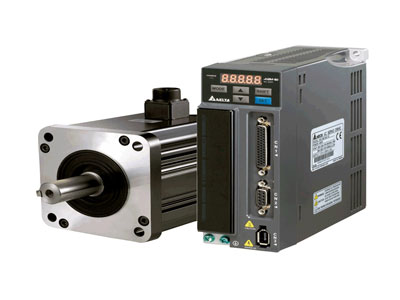Key Takeaway
To inspect a servo motor, begin with a visual check for cracks, corrosion, or any loose parts. Clean the motor housing, cooling vents, and wiring to remove any dust or debris that could affect performance. Ensure all electrical connections are secure and free from wear.
Next, use a multimeter to measure the motor’s voltage and current levels to confirm they’re within the specified range. Also, check the insulation resistance to detect potential electrical faults. Listen for any unusual noises like grinding or squealing during operation, as these can indicate mechanical problems. Regular inspections help catch issues early and keep your servo motor running reliably and efficiently.
Basic Servo Motor Inspection Procedures
The first step in any servo motor inspection is a visual examination. Begin by carefully looking over the motor for obvious signs of damage. Cracks in the housing, corrosion, or loose components are indicators of wear or failure. Even small issues, like dust or dirt buildup, can have a significant impact on motor efficiency. Make sure to check the cooling vents and wiring connections for cleanliness and proper attachment. Sometimes, a loose connection can cause inconsistent power supply, which could lead to performance drops or total motor failure.
In addition to the visual check, listen closely to the motor during operation. Unusual noises, such as grinding or squealing, often indicate mechanical problems that could escalate if not addressed.

Key Components to Inspect in a Servo Motor
When inspecting a servo motor, certain components require closer attention. The bearings, for instance, play a critical role in motor functionality. Worn-out bearings can create excessive friction, leading to motor overheating or seizure. Carefully inspect the rotor and stator to check for wear or misalignment. Any signs of wear in these components can affect the motor’s rotational efficiency, reducing overall performance.
The feedback system, typically an encoder or resolver, is another vital part of the motor. This device ensures the motor knows its position and speed. Any malfunction in this system can lead to inaccurate positioning or erratic behavior. Don’t forget to examine the motor’s insulation as well; damaged insulation can cause electrical shorts, leading to motor failure. Being thorough in checking these key components ensures that small issues are identified and resolved before they cause more serious damage.
Tools for Accurate Inspection of Servo Motors
Accurate inspection requires the right tools. A multimeter is essential for measuring voltage, current, and resistance. These readings help determine whether the motor is functioning within its specified electrical parameters. Insulation testers are also vital for checking the condition of the motor’s windings and insulation material, as poor insulation can lead to electrical shorts or complete motor breakdown.
For mechanical checks, you’ll need a stethoscope-like device to listen for abnormal noises. Grinding or squealing sounds usually indicate worn bearings or misalignment. A torque wrench is useful when you need to reassemble the motor’s parts, ensuring that all components are tightened to the proper specifications. Without these tools, it’s nearly impossible to conduct a comprehensive inspection, and skipping this step could lead to missed problems that could escalate later.
Common Problems Detected During Inspections
When inspecting a servo motor, you’ll likely come across several common issues. One of the most frequent problems is insulation breakdown, which can cause electrical shorts. These shorts not only reduce efficiency but can also lead to complete motor failure. Another common issue is the buildup of dust and debris, which can clog cooling vents and lead to overheating.
Mechanical wear is another concern. Bearings are particularly prone to wear, and once they start to degrade, they create friction that can damage other components of the motor. Misalignment of the rotor or stator is also something to watch out for, as it reduces the efficiency of the motor’s rotational movement. Identifying these problems early on can save you from costly repairs and downtime, ensuring that your motor runs smoothly for longer.
When to Replace vs Repair a Servo Motor
Deciding whether to repair or replace a servo motor can be tricky. Minor issues, such as worn bearings or loose wiring, are usually worth repairing. These problems are often easy to fix, and repairing them can extend the motor’s lifespan significantly. However, if multiple severe problems are detected—such as damaged windings, complete insulation failure, or significant rotor and stator wear—it might be more cost-effective to replace the motor entirely.
Age is another factor to consider. If the motor has been in service for many years and shows signs of wear across multiple components, replacement may be the better option. Newer motors will typically run more efficiently and have better technology for controlling power and speed. Balancing the cost of repair versus the potential gains in performance and reliability from a replacement is crucial when making this decision.
Conclusion
Regular servo motor inspections are essential for keeping your machinery running smoothly. By performing basic visual checks, using the right tools, and thoroughly inspecting key components, you can detect potential issues early. Deciding when to repair or replace a motor can be challenging, but addressing problems before they escalate ensures your equipment remains reliable and cost-effective. Always prioritize regular inspections to prevent unexpected failures and extend the lifespan of your servo motors.
